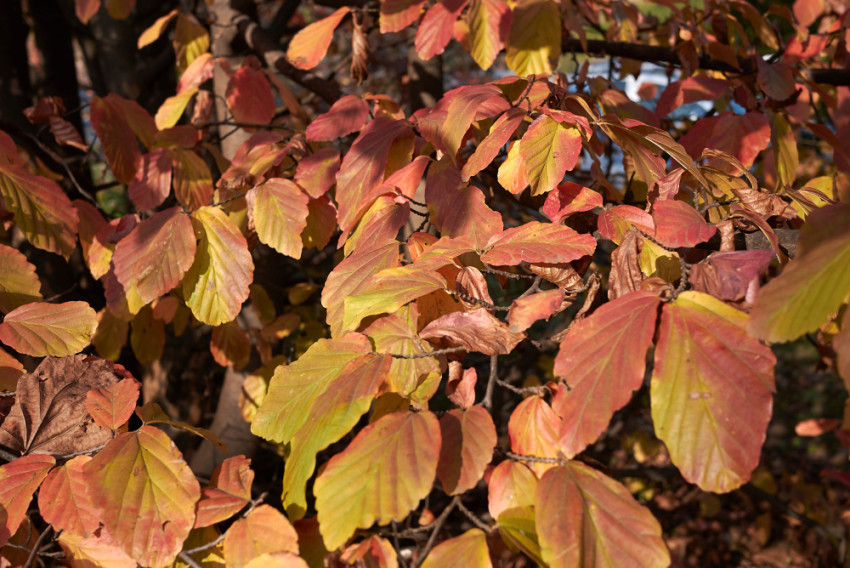
When is the Best Time for Parrotia Persica Pruning?
Introduction
Parrotia persica, commonly known as Persian Ironwood, is a deciduous tree native to the Middle East. With its stunning autumn foliage and unique exfoliating bark, Parrotia persica has become a popular choice for landscape design. However, to ensure the tree's health and maintain its aesthetic appeal, proper pruning is essential. Understanding the best time for Parrotia persica pruning is crucial to maximize its benefits and minimize potential risks.
Understanding Parrotia Persica
Parrotia persica is a medium-sized tree that can reach heights of up to 30 feet. It is characterized by its broad, spreading crown and attractive red, orange, and yellow foliage in the fall. In landscaping, Parrotia persica is often used as a specimen tree, providing shade and visual interest. Understanding the tree's growth patterns, characteristics, and typical uses is key to making informed pruning decisions.
The Benefits of Pruning
Pruning plays a vital role in maintaining the health and vitality of Parrotia persica trees. By removing dead, diseased, or overcrowded branches, pruning enhances the tree's overall structure and appearance. It allows for better air circulation, light penetration, and reduces the risk of branch breakage. Moreover, pruning promotes new growth, rejuvenates the tree, and encourages more vibrant foliage. By emphasizing the benefits of pruning, Parrotia persica owners can understand its significance for their tree's well-being.
Factors to Consider Before Pruning
Tree Age and Maturity
The age and maturity of the Parrotia persica tree influence the timing and extent of pruning. Young trees require different pruning techniques compared to mature ones. For young trees, pruning focuses on training the tree's shape and establishing a strong framework. In contrast, mature trees may require maintenance pruning to remove deadwood and improve overall structure. Understanding the tree's developmental stage guides the pruning approach.
Seasonal Considerations
1 Pruning in Winter
Winter is a common time for pruning Parrotia persica, as the tree is dormant. Pruning during this season offers several advantages. With the absence of leaves, the tree's structure is more visible, facilitating better decision-making. Additionally, the tree's reduced sap flow minimizes the risk of disease transmission and excessive bleeding. However, care must be taken to avoid pruning during extremely cold periods to prevent frost damage.
2. Pruning in Spring
Early spring is an ideal time for Parrotia persica pruning, just before the tree enters its active growth phase. Pruning at this time allows for better wound healing and limits stress on the tree. It also promotes vigorous new growth and encourages abundant flowering. However, pruning too late in spring may affect the tree's ability to recover before summer.
3. Pruning in Summer
Summer pruning focuses on corrective measures and controlling the tree's size. It involves removing unwanted branches, water sprouts, or suckers that may have developed during the growing season. Summer pruning can help redirect the tree's energy and maintain its desired shape. However, pruning during hot weather should be limited to prevent excessive stress on the tree.
4. Pruning in Fall
Fall pruning is generally avoided for Parrotia persica, as it coincides with the tree's preparation for winter dormancy. Pruning during this time may interfere with the tree's natural processes and make it more susceptible to winter damage. However, limited pruning to address safety concerns or remove dead branches may be necessary. Caution should be exercised to avoid disrupting the tree's natural cycle.
Signs That Indicate Pruning is Needed
Regular tree inspections are crucial for identifying signs that indicate Parrotia persica pruning is necessary. Some common indicators include dead, damaged, or crossing branches, excessive canopy density, and irregular growth patterns. Additionally, the presence of pests or diseases may warrant targeted pruning. Promptly addressing these signs through appropriate pruning techniques ensures the tree's long-term health and vitality.
Pruning Techniques and Tips
A. Tools and Equipment
To effectively prune Parrotia persica trees, specific tools and equipment are required. Essential pruning tools include bypass pruners, loppers, pruning saws, and pole pruners for reaching higher branches. Regular maintenance of these tools, such as sharpening and cleaning, ensures optimal performance and prevents the spread of diseases between trees.
B. Proper Pruning Methods
1. Shaping and Thinning
Shaping and thinning the tree's canopy is essential for maintaining an attractive form and structure. This involves selectively removing branches to achieve balanced growth, improve airflow, and reduce excessive weight. Step-by-step instructions on assessing the tree's shape, identifying target branches, and making precise cuts will help achieve desired results.
2. Deadwood Removal
Removing dead or diseased branches is crucial to prevent the spread of decay and protect the tree's health. Proper identification of deadwood and correct pruning techniques, such as making clean cuts just outside the branch collar, are key. Deadwood removal promotes overall tree vigor and reduces the risk of branch failure.
3. Size Control
Controlling the size of Parrotia persica trees is necessary to fit them into specific spaces and maintain harmony within the landscape. Techniques such as selective branch removal and crown reduction help manage height and spread. Discussing strategies for size control, including appropriate timing and pruning limitations, ensures the tree remains in proportion while preserving its natural beauty.
Potential Challenges and Precautions
Pruning Parrotia persica trees presents potential challenges and risks that need to be addressed to ensure successful outcomes. These challenges may include over-pruning, improper techniques, or inducing stress to the tree. Precautions such as avoiding excessive pruning, adhering to proper pruning principles, and regularly monitoring the tree's response are essential for minimizing damage or stress.
Hiring a Professional Arborist
While minor pruning tasks can be performed by homeowners, certain situations may require the expertise of a professional arborist. It is important to recognize when professional assistance is recommended, such as when dealing with large or complex pruning projects, addressing safety concerns, or preserving the tree's integrity. Tips for finding and selecting a qualified arborist will assist tree owners in making informed decisions.
Conclusion
In conclusion, understanding the best time for Parrotia persica pruning is essential for maintaining the health, structure, and aesthetic appeal of these magnificent trees. By considering factors such as tree age, seasonal considerations, and signs that indicate pruning is needed, tree owners can make informed decisions about when and how to prune their Parrotia persica. With proper techniques, tools, and precautions, the pruning process can be carried out effectively, promoting the tree's vitality and longevity. Remember, timing and techniques are key to successful Parrotia persica pruning, ensuring a flourishing and visually pleasing addition to any landscape.



